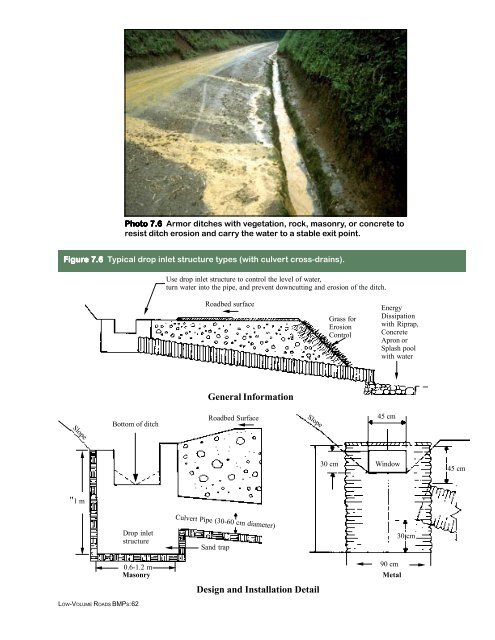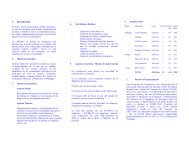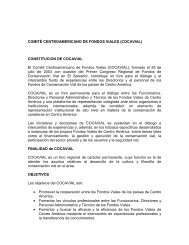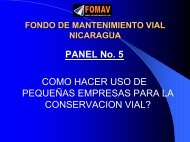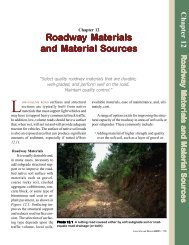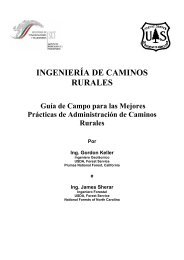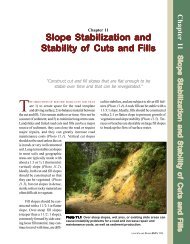You also want an ePaper? Increase the reach of your titles
YUMPU automatically turns print PDFs into web optimized ePapers that Google loves.
Photo 7.6 Armor ditches with vegetation, rock, masonry, or concrete to<br />
resist ditch erosion and carry the water to a stable exit point.<br />
Figur<br />
igure e 7.6 Typical drop inlet structure types (with culvert cross-drains).<br />
Use drop inlet structure to control the level <strong>of</strong> water,<br />
turn water into the pipe, and prevent downcutting and erosion <strong>of</strong> the ditch.<br />
Roadbed surface<br />
Grass for<br />
Erosion<br />
Control<br />
Energy<br />
Dissipation<br />
with Riprap,<br />
Concrete<br />
Apron or<br />
Splash pool<br />
with water<br />
General Information<br />
Bottom <strong>of</strong> ditch<br />
Roadbed Surface<br />
Slope<br />
45 cm<br />
Slope<br />
30 cm<br />
Window<br />
45 cm<br />
"1 m<br />
Drop inlet<br />
structure<br />
Culvert Pipe (30-60 cm diameter)<br />
Sand trap<br />
30 cm<br />
0.6-1.2 m<br />
Masonry<br />
LOW-VOLUME ROADS BMPS:62<br />
Design and Installation Detail<br />
90 cm<br />
Metal


